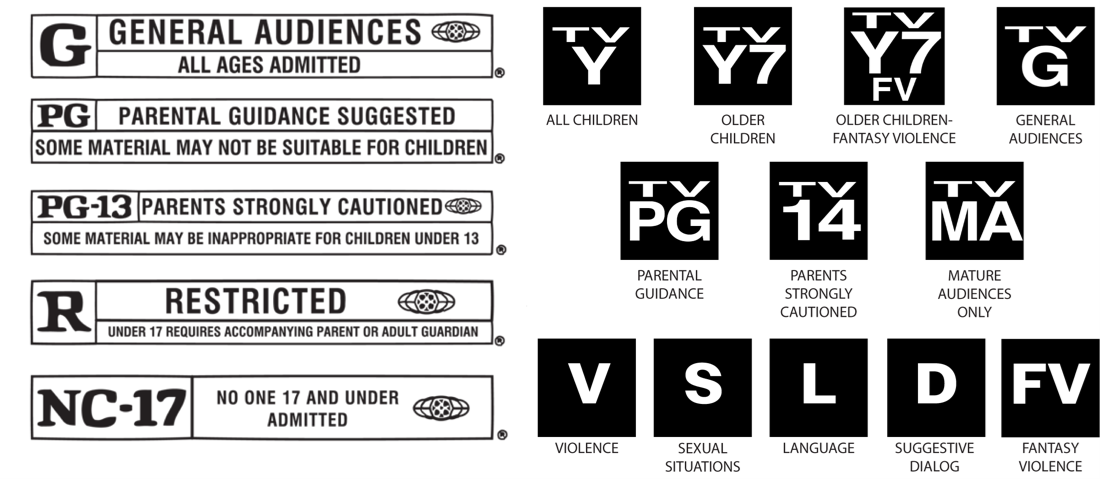Worldwide Content Classification – What Happens When You Get It Wrong
In our previous blog post, “ Worldwide Content Classification – How Hard Can It Be? ” we examined how the exponential growth of the OTT and VOD markets, along with the annual release of hundreds of thousands of new titles, places pressure on content regulators and platforms to obtain in-country age-ratings before release. In this post, we’ll explore what happens when content providers attempt to short-cut the process.
Content producers use strategies to navigate the ratings process. We’ve discussed avoiding them altogether, but another common approach is mapped ratings. Mapping a rating involves looking at the MPAA rating and guessing the equivalency age rating in another country. This is usually done without a clear understanding of the criteria used by regulatory agencies and results in real risk if done so.
• If the rating is too low, then the content provider can find itself in legal jeopardy.
• If the rating is too high, then the audience is artificially constrained.
• If the rating is Unrated/Not Rated, then the content is not discoverable on most platforms.
The MPAA PG-13 rated film “Hunger Games” is a good example of how this issue can manifest.
The table below demonstrates the broad difference in age ratings across several countries and indicates what ratings could result if content providers were to ignore cultural sensitivities and simply guess an age rating based upon the MPAA’s PG-13. The ratings in red indicate conceivable ratings based on an unfamiliarity of country ratings criteria or cultural sensitivities. These higher ratings would result in a smaller audience, and therefore, lower box office. Too low a rating, as in the case of rating the film a “12” in Brazil, could put the content provider in legal jeopardy for exposing young children to unacceptable content such as violence. The cells with black borders and in green are the actual country ratings for the film as assigned by the regulatory bodies.

To understand the market impact of getting it wrong, in Germany, for example, the difference in audience between an age “12” and an age “16” rating is 2.6 million potential viewers. Therefore, guessing a “16” rating for “Hunger Games” in Germany (where the average theater ticket price is $10) would have a $26M impact on box office sales in one country.
In some countries content providers can release content as Unrated or Not Rated. This is problematic because most platform algorithms exclude unrated content, which means those films will not be discoverable or appear on a platform’s list of recommendations. Unless a subscriber knows the title of the film or show, they will not be able to find it. If they cannot find it, they will not watch it.
Episodic television is more challenging because scripts change from episode to episode, and the rating may be higher or lower as a result. This risk is most often seen in dramas that include violence, sexual references, cultural, religious and/or moral content. The television series’ “Mizrapur”and “Tandav” are clear examples of this phenomenon.
Both shows have episodes that are acceptable under India’s standards. However, in one episode of “Tandav” members of the public complained the content “hurt religious sentiments.” “Tandav” is the subject of legal action following a complaint filed by member of India’s Parliament. As the following quote shows, review of that one episode was enough to foment a complaint to the Union Minister for Information and Broadcasting.
“After watching the series, it was found that in the 17th minute of the first episode, characters playing Hindu gods and goddesses have been shown in an uncharitable way and using objectionable language, which can incite religious tension. Similarly, in the 22nd minute of the same episode, efforts have been made to ignite caste clashes with casteist remarks. The person holding a dignified post like that of Prime Minister has been shown in a very derogatory manner in the web series.” – Senior Sub-inspector Amar Nath Yadav
“Mizrapur” is now before India’s Supreme Court, following complaints that episodes depict the area’s residents as a “goon(s), vagabond(s) and adulterer(s) in front of the country,” and has “completely tarnished the historical and cultural image of the city/district.” One must question how an OTT platform can be expected to know the seriousness of these types of concerns when the in-country producer is not aware of them? “Mizrapur’s” producers have publicly said that any misrepresentation was unintentional, but that has not stopped legal action against the series.
Cultural sensitivity is another factor that can seriously impact content. Issues like drug addiction, rape, child abuse, and suicide are seen differently in many cultures and must be taken into consideration. Suicide, for example, is treated differently in film in the U.S., United Kingdom, France, Netherlands and Sweden, and Japan. How it is portrayed matters. Is it a primary component of the story? Is it depicted in the film, e.g., seriously or callously? Is it violent or not? Without a full understanding of these cultural factors, content providers can make mistakes in age-ratings and consumer advisories that directly impact markets and revenue.
Besides adverse impact to revenue, penalties for violating local laws and cultural norms can include take-down notices, monetary sanctions, legal sanctions, negative brand and business impact, and possibly imprisonment. Risk can be mitigated when content creators use the Spherex platform to culture fit their content for local audiences worldwide.
1 Tandav controversy: Here’s everything you should know, The Indian Express , Jan. 27, 2021
2 Supreme Court issues notice to Centre, Amazon Prime Video for ‘Mirzapur,’ Mint , Jan. 21, 2021
3 Ibid.
Related Posts


SILICON VALLEY
2336-H Walsh Ave.
Santa Clara, CA 95051
+1(408) 550-2344
LOS ANGELES
3900 W Alameda Ave.
Burbank, CA 91505
+1(310) 496-7307









